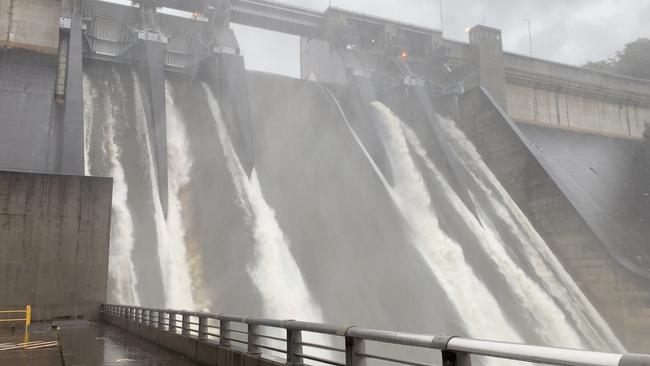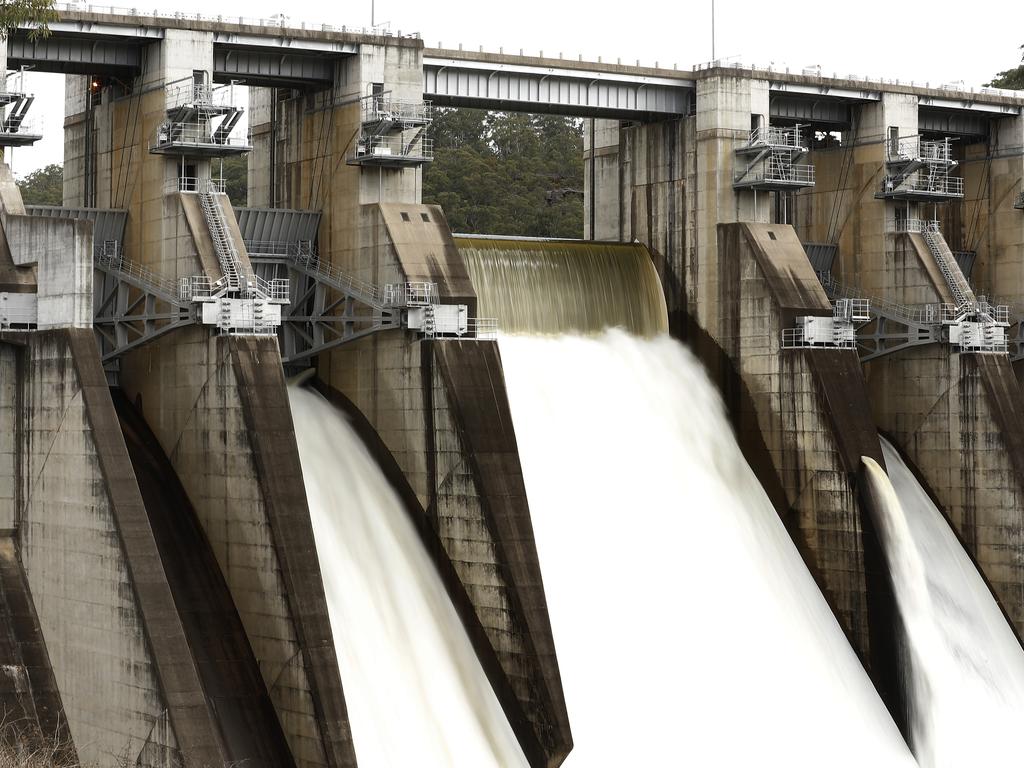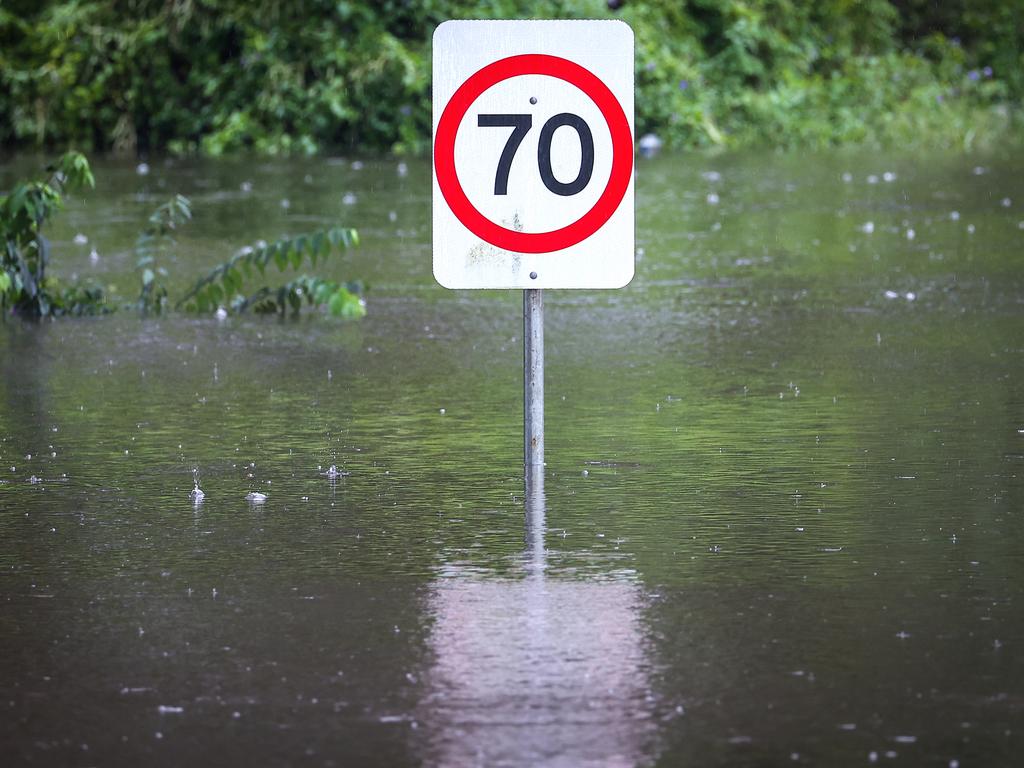Cabinet eyed proposal to reduce dam level
NSW government considered lowering amount of water in Warragamba Dam to save up to 1800 homes in event of overflow, confidential documents show.

The NSW government last month considered lowering the amount of water in Warragamba Dam in a bid to save up to 1800 homes in the event of an overflow, confidential cabinet documents show.
The secret cabinet submission raises questions about the government’s claims the dam’s operating rules prevented it from being used for flood mitigation.
The submission, prepared for Water Minister Melinda Pavey and Western Sydney Minister Stuart Ayres and dated February 12, favours lowering the dam water level to 5m below full.
But the modelling was based on an assumption that the risk of a major inflow event at Warragamba Dam was only five per cent higher than normal.
Instead, the dam, Sydney’s primary water supply, reached full capacity on Saturday and has been spilling hundreds of gigalitres of water every day since then, threatening communities in the Hawkesbury Nepean Valley.
Under current rules, Warragamba Dam is permitted only to collect and supply water; its licence would have to be amended to allow it a flood-mitigation role.
WaterNSW has repeatedly noted during the floods that it “is not authorised to lower the storage based on weather forecasts”.
Whether authorities should have released water from the dam has become a serious internal issue for the Berejiklian government, with Emergency Services Minister David Elliott, whose Baulkham Hills electorate was hit by the floods, furious at Ms Pavey.
Ms Pavey and Gladys Berejiklian have said it was not feasible to reduce the dam to 25 per cent of its capacity, the level they say it needed to reach to prevent spilling. Only 130GL have been released in recent months, while up to 450GL a day is now spilling over the top of the dam. Warragamba is expected to spill over for another week.
Mr Elliott was invited to contribute to the cabinet submission on flood mitigation but declined, government sources said.
On Tuesday night Mr Elliott said: “I don’t discuss cabinet decisions but I’m on record as saying the mitigation should be ongoing. Given WaterNSW has acknowledged that this policy should be reviewed I welcome their approach.”
Jamie Pittock, a water management researcher at the Australian National University, said lowering the dam water level would only be a “minor” help in flood mitigation.
“In some ways its fairly cheap mitigation but it still wouldn’t save the most flood prone houses,” Professor Pinnock said.
“There are 5000 houses below the one in 100 year flood line down river and of course they can be hit by flooding that comes in from places like the Nepean, the South Creek and Gross River.
“It would be a minor help and with a flood like this every bit of help is useful … I would argue that what they really should be doing is funding the relocation of homes that are at huge risk.”
The modelling in the document, labelled sensitive, shows the majority of the homes that would be spared from an overflow were near Windsor and Richmond in Sydney’s northwest.
The government has been pushing for several years to raise the wall of the dam by up to 14m to aid in flood mitigation, a plan opposed by environmentalists and Indigenous groups who argue it would flood parts of the Blue Mountains World Heritage Area, damaging unique ecosystems and Aboriginal heritage sites.
The submission notes that if a decision is made to proceed with the project, the water will need to be 5m below full supply level by early 2023 to protect the construction site. The submission’s authors note, however, there is an “opportunity to partially reduce flooding risks for the downstream community in the interim by bringing forward the lowering of the water level, thus creating a flood mitigation zone”.
The submission warns that it could take up to a year to implement the mitigation strategy but assesses the current likelihood of flooding was “less than November last year due to the weakening La Nina and higher certainty as to the inflow”.
The current likelihood of a major inflow event was estimated at “about 5 per cent higher than normal” but “the overwhelming probability (90 per cent) is for relatively low inflows which do not result in significant flooding.”
The upper limit for those likely inflow scenarios was assessed to be in the order of only 200 gigalitres (GL). The document does not indicate over what period.
In fact, about 1500 GL of water is expected to flow into the dam during the current week of torrential rain, about 75 per cent of its storage capacity of 2000GL.
The proposal to reduce the water level to five metres below full would reduce the capacity of the dam by about 18 per cent or 360GL and introduce some water quality and security risks. About 200 days of Sydney’s water supply would have to be released to achieve the 5m-below-full level.
Reducing the water level to 12m below full would mitigate a moderate flood event such as the one during February 2020, the submission states, but would reduce capacity by about 40 per cent, a risk considered too great.
Lowering water levels to 5m below full — for floods between a one in five and one in 100 chance per year of occurring — would mean between 330 and 1800 fewer homes would be damaged.
The majority of these are prefabricated homes and homes on agricultural lands located on the Windsor-Richmond flood plain.








To join the conversation, please log in. Don't have an account? Register
Join the conversation, you are commenting as Logout